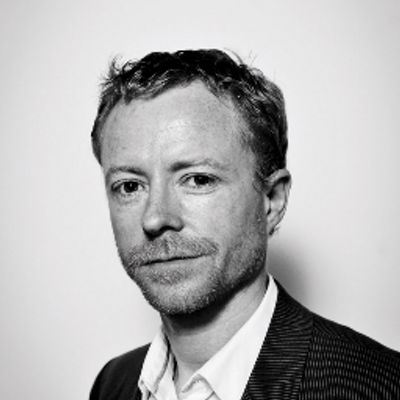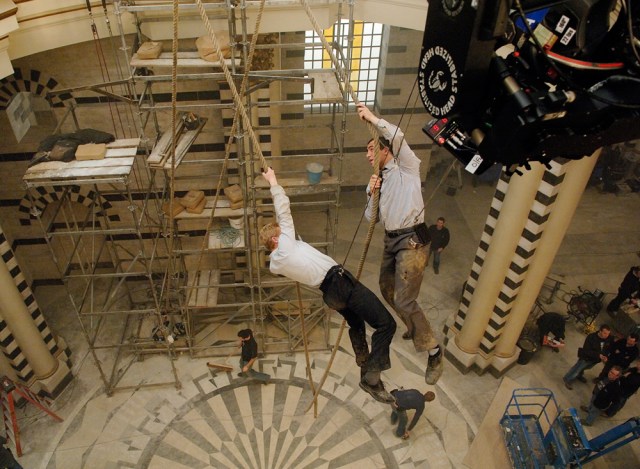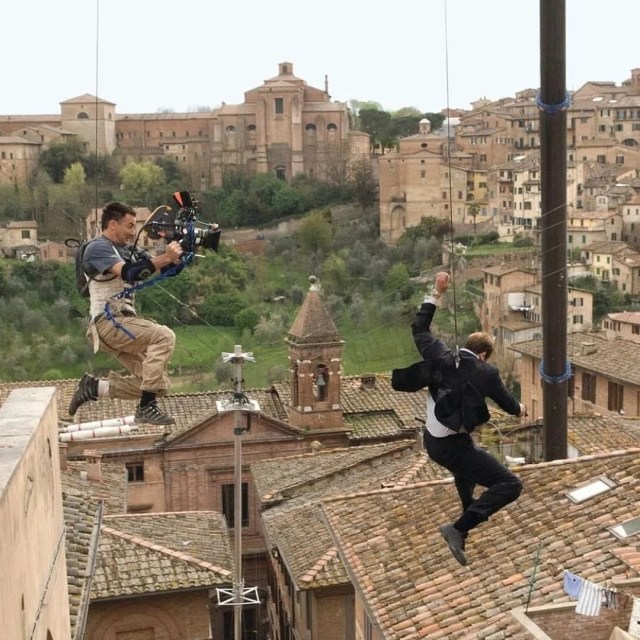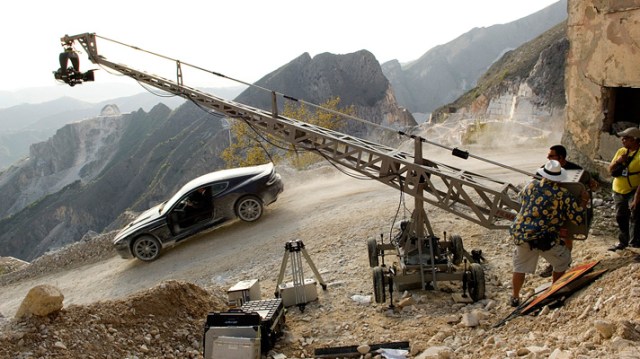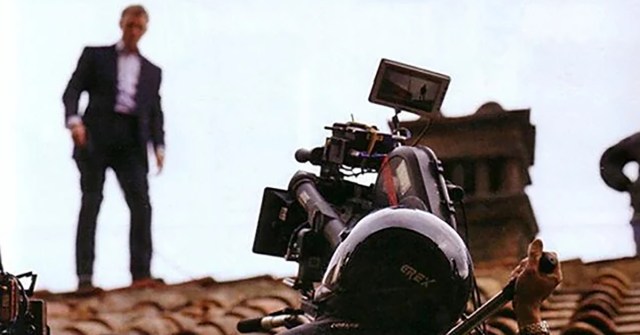
TL;DR
- The work of a cinematographer begins and ends with guiding a director’s vision to screen, but the path is rarely clear, says BAFTA-nominated Roberto Schaefer, ASC, AIC.
- Successful interpretation of a director’s vision, he says, requires relationship management and persistence for a DP to be able to get their point of view across.
- To Schaefer, the most interesting part of the job is the creation of images from scratch, but he believes there is a risk that this will be superseded by GenAI.
- Schaefer will be leading a three-hour interactive workshop at NAB Show, “Script to Screen – The Cinematographer’s Process,” walking attendees through a cinematographer’s creative process of crafting iconic cinematic images.
The work of a cinematographer begins and ends with guiding a director’s vision to screen, but the path is rarely clear, as Roberto Schaefer, ASC, AIC will demonstrate in a masterclass, “Script to Screen – The Cinematographer’s Process,” Monday, April 15 at 2 PM.
Cinematography 101 is all about interpretation, Schaefer explains.
“Some directorial communication can be so obtuse you really need to work hard to discern what it is they wish to say.”
“Many issues are a matter of management such as liaising with VFX and keeping on top of post-production.”
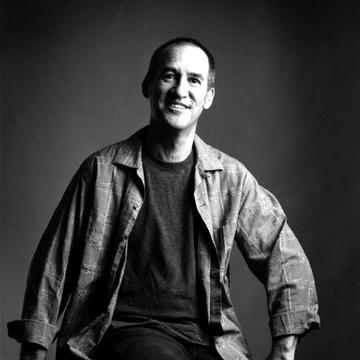
Schaefer is a BAFTA-nominated cinematographer who began his film career in Europe working for Martin Scorsese, Joe Pykta and Nestor Almendros. He eventually moved to Los Angeles to shoot for director Chris Guest on films including Best In Show and Waiting for Guffman.
In an extensive collaboration with director Marc Forster they made Monster’s Ball, Finding Neverland, The Kite Runner and Quantum of Solace. Schaefer has also shot The Host, Red Sea Diving Resort and episodes of Amazon sci-fi The Peripheral.
During his three hour workshop at NAB Show, Schaefer will show clips from The Paperboy (2012) explaining how he worked with director Lee Daniels to find the visual language of the movie.
“I like to get general ideas of the tone and feeling from a director and if there are any specific ideas they have in mind. There are typically references from stills or other movies to lean on but I like to be given a free hand to interpret the movie in a way that I think fits the visual context of the story. It’s not okay for me to copy a shot. from another movie. It is fine to use these as an influence but let’s find a way to integrate it into our language.”
Schaefer will also show clips from Stay (2005) directed by Forster which involved some detailed visual effects sequences. He will share elements of the original script along with pre-production diagrams and previs material to show the progress of bringing a concept from page to screen.
The best laid plans are at risk of being undermined by budget, so compromises or alternative solutions may need to be found.
“You might have this great vision and you might want to translate it in a certain way but then the budget people come in and say ‘Sorry, you can’t do that.’ So, you have to figure out another direction.
“Even if you have $250 million they want $400 million worth on screen. If you have $100,000 they want a million dollars’ worth. That’s never going to change. You start with your wish list and then try to figure out how to make it work,” he says.
“Ultimately, you want to be a participant and a collaborator so finding a way of deciphering what the director says is really important — and some of them you really have to decipher.”
Schaefer’s warning when it comes to working with VFX will be familiar to many DPs. It’s all about who has control and authorship of the final image on screen.
“In my experience, sometimes VFX are not really ready to collaborate that much with you. It’s almost like, you’ve done your job photographing, now it’s our turn. What can happen when you get to the DI is that the front plates don’t match your original photography,” he explains.
“It’s a problem especially for many young DoPs who don’t know how to work with VFX at a time when the work is getting more complex. The bigger budget shows will often have five or more VFX vendors onboard. The key is to have a dialogue at the beginning in pre-production. You want to get talking with them to understand their process and for them to understand yours.”
Successful interpretation of a director’s vision is also about relationship management and how persistent the DP is in getting their point of view across.
“The director might tell you what they want and the DoP will go ahead and do it but then realize that the director really doesn’t have a clue visually. This is rare, but it happens, so you have to be prepared to take that burden on and even challenge the director. You’d be diplomatic saying something like: ‘I think this is what is best to bring your ideas across’; and ‘let me show you what we can do,’ but you might have to be persistent. Some young DoPs are afraid to question the director too much,” says Schaefer.
“Of course, it is the director’s movie in the end, especially if they are also the writer but if you’re hired as the DP you have an agreement with them. It’s like a contract and you want them to stand by it and honor your side of the contract which is essentially a respect for your craft in shaping the color and the composition and the light and the story.”
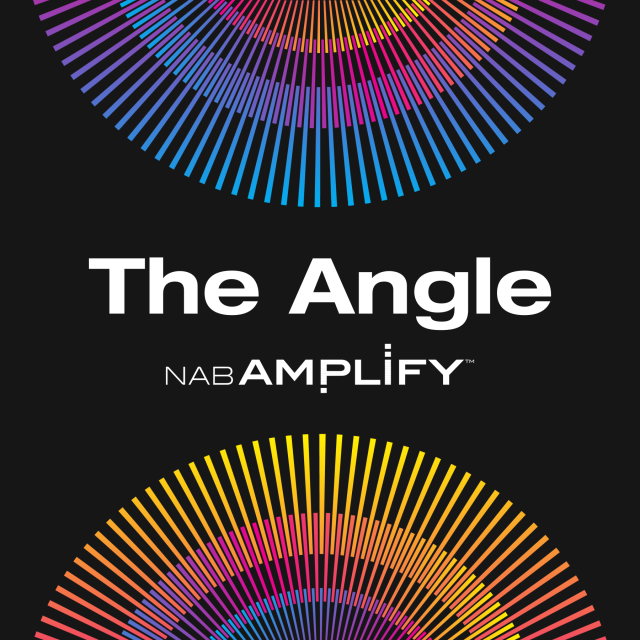
Why subscribe to The Angle?
Exclusive Insights: Get editorial roundups of the cutting-edge content that matters most.
Behind-the-Scenes Access: Peek behind the curtain with in-depth Q&As featuring industry experts and thought leaders.
Unparalleled Access: NAB Amplify is your digital hub for technology, trends, and insights unavailable anywhere else.
Join a community of professionals who are as passionate about the future of film, television, and digital storytelling as you are. Subscribe to The Angle today!
To Schaefer the most interesting part of the job is the creation of images from scratch but he believes there is a risk that this will be superseded by GenAI.
“There are already so many ways to affect the image, not only in the camera, but afterwards in any number of software programs. Even FilmLight’s grading system Baselight and DaVinci Resolve has incredible tools where you can make the image look as if it were shot with an anamorphic lens. You can shape the aberrations. Make distortions, add flares. There are so many things that can be done to the image after you’ve done your job — and you don’t even know they’re going to do it,” he says.
“I’ve seen editors change the color in the Avid and then present to the director as if that’s what it should be. As cinematographers we have to be aware of all of these things and try to keep them under our control if we’re to guarantee that the final image is what you had discussed with the director.”
He adds, “AI is definitely something that we have to be really wary of. With AI moving so fast I’m not going to predict how many years it will be before we lose control but it’s looking like it’s going to happen eventually.”

